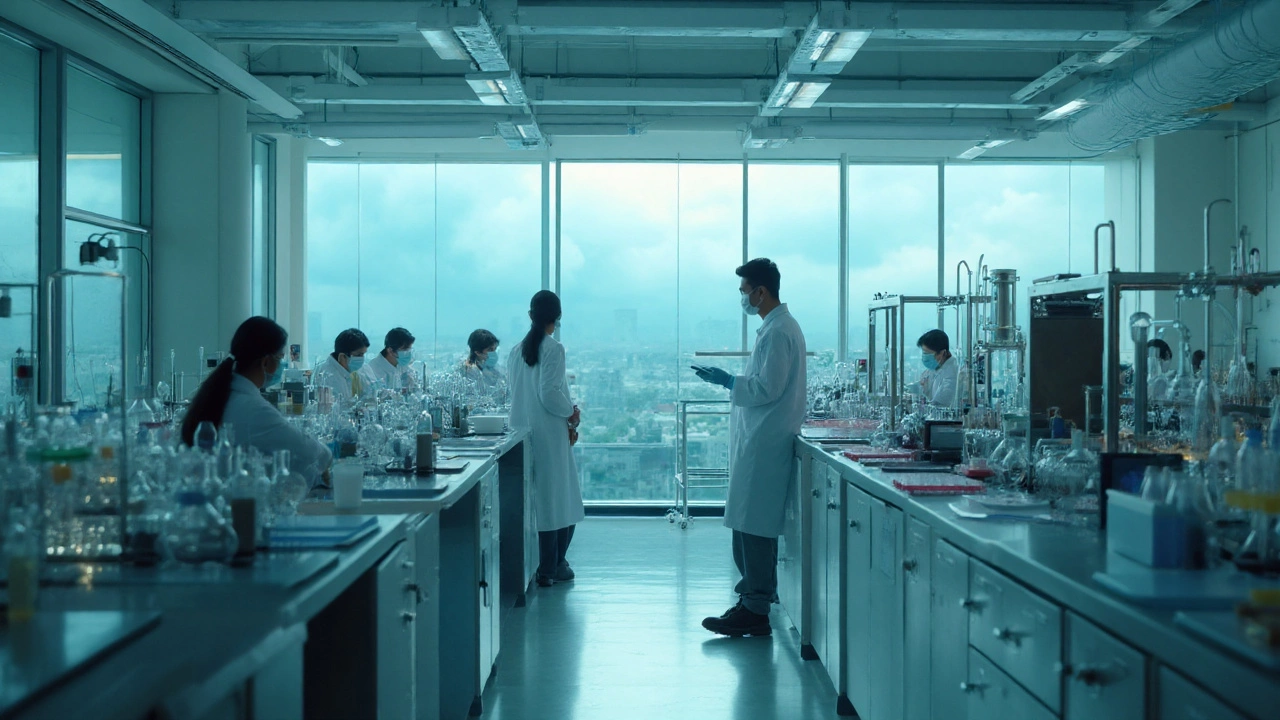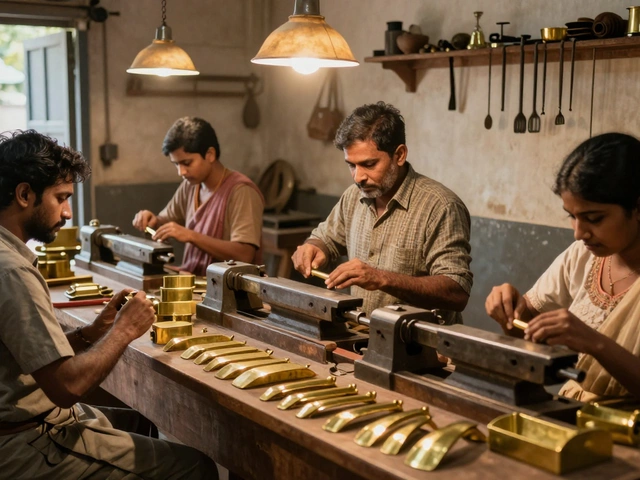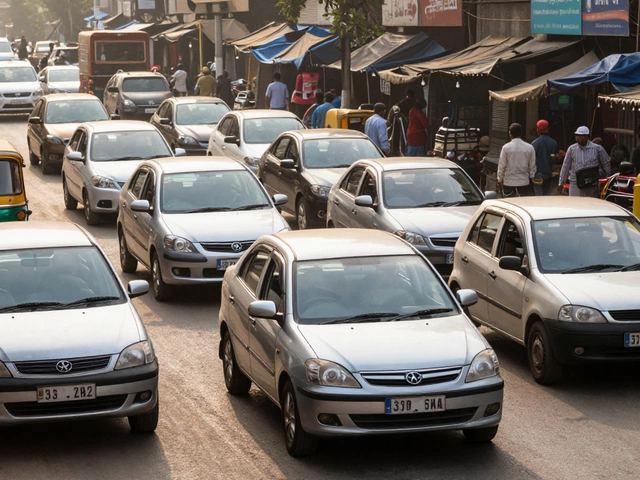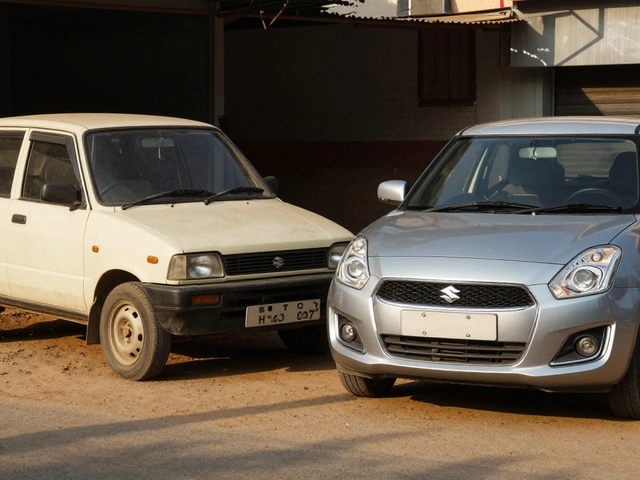Largest Pharma Hub in India (2025): Baddi, Hyderabad or Gujarat?

If you ask five people “Which is the largest pharma hub in India?”, you’ll get at least three answers. Here’s the simple truth: by number of manufacturing units and tablet-capsule capacity, Baddi (Himachal Pradesh) still wears the crown. By API scale, vaccines, and research density, Hyderabad is hard to beat. By export muscle and integrated chemical-pharma supply chains, Gujarat’s west-coast cluster leads. Your “largest” depends on what you’re measuring-and what you need.
TL;DR: The largest pharma hub depends on the yardstick
Short answer you can act on today:
- Largest by operational formulation manufacturing base: Baddi-Barotiwala-Nalagarh (Himachal Pradesh). It’s India’s biggest concentration of oral solid dosage facilities and packaging lines.
- Largest by APIs, vaccines, and R&D density: Hyderabad (Genome Valley + legacy API zones; Hyderabad Pharma City is coming up).
- Largest by export-oriented supply chains: Gujarat’s Ahmedabad-Vadodara-Ankleshwar-Vapi belt (deep chemical ecosystem + ports).
- Best for biologics and next-gen vaccines at scale: Hyderabad and Pune corridors.
- If you only want the name most people accept for the largest pharma hub in India (operational, unit count, formulations): Baddi.
Source compass for the claims above: Department of Pharmaceuticals Annual Report 2023-24 (for capacity and policy context), Pharmaceuticals Export Promotion Council of India (Pharmexcil) export data 2024, Telangana Life Sciences Yearbook 2023 (company counts, vaccine/API footprint), Invest India Life Sciences profile 2025, Himachal Pradesh BBN Industries Association notes, and Gujarat Industrial Development Corporation briefs.
How to choose the right hub for your goal (step-by-step)
“Largest” doesn’t automatically mean “best for you.” Use this quick flow to land on the right location.
- Define your product class and market.
- Formulations - oral solids, liquids, syrups → Baddi, Sikkim, Goa, Ahmedabad.
- APIs and intermediates → Hyderabad, Ankleshwar/Vapi (Gujarat), Vizag (AP).
- Vaccines/biologics/cell culture → Hyderabad, Pune, Bengaluru.
- US/EU regulated markets focus → Clusters with dense USFDA-MHRA plant base (Hyderabad, Ahmedabad, Goa, Baddi).
- Map the supply chain.
- Solvents and intermediates heavy? Stay near chemical belts and ports (Gujarat, Vizag, Hyderabad).
- High-cube exports? Proximity to Mundra, Pipavav (Gujarat), JNPT (Navi Mumbai), Krishnapatnam/Vizag helps.
- Run a 5-line cost model.
- Land (SEZ vs non-SEZ), utilities (power, water, steam), effluent treatment, compliance, and logistics per unit shipped.
- Rule of thumb: moving APIs closer to ports cuts freight and hazard-handling costs; formulations benefit more from packaging labor efficiency.
- Check approvals and timelines.
- Environmental clearances (especially for APIs) can be the critical path. API parks with common ETPs save months.
- Ask park developers for “plug-and-play” readiness letters and typical time-to-commission.
- Validate talent pipeline.
- For QC/QA, production chemists, and regulatory affairs, Hyderabad, Ahmedabad, and Mumbai regions have deep benches.
- Formulations packaging lines scale faster in Baddi/Goa/Sikkim due to experienced operators.
- Stress-test compliance risk.
- Pick parks with history of USFDA/MHRA-compliant sites. Ask for anonymized audit histories.
- For APIs, verify ZLD/ETP capacity and solvent recovery systems-inspect physically.
- Do a site visit sprint.
- Two-day loop: meet park ops, sample utility bills, tour ETP, talk to 3 neighboring unit heads off-record.
- Watch for hidden costs (backup power, water tankers, waste-handling premiums).
Decision rule: If your product is solvent-intensive API and you ship globally, Gujarat or Vizag usually wins on logistics. If you need vaccine/biologic talent and GMP infrastructure, Hyderabad or Pune is simpler. For high-volume tablets/capsules into India and semi-regulated markets, Baddi is a proven workhorse.
Examples: What each major hub is best for (with real-world context)
Baddi-Barotiwala-Nalagarh (Himachal Pradesh): The classic large-scale formulation base. Many Indian and MNC brands run high-speed OSD lines here. Why it works: long manufacturing lineage, trained operators, mature vendor base for packaging materials, and quick scale-up for demand spikes. Caveats: hill logistics add cost for heavy inbound raw materials and outbound exports; API back-integration is limited on-site. Tax holidays that drew the first wave are gone, but sunk ecosystem advantages remain.
Hyderabad (Telangana): Called India’s bulk drug capital and a vaccines powerhouse. Genome Valley anchors R&D and biologics; legacy industrial areas host APIs and intermediates. Hyderabad Pharma City, billed as a very large integrated cluster, is progressing and is expected to consolidate APIs, formulations, and support services with common utilities and ETP. Reality check for 2025: parts of the new cluster are at various development stages; many firms still operate across Genome Valley, Bollaram, Pashamylaram, and private parks. If you need cross-pollination between discovery, scale-up, and regulatory talent, Hyderabad is a magnet.
Gujarat belt (Ahmedabad-Vadodara-Ankleshwar-Vapi): Think deep chemical supply chains, solvent networks, and port access. Ankleshwar and Vapi are synonymous with APIs and intermediates; Ahmedabad and Vadodara add formulations and big pharma HQs. Export logistics are smoother via Mundra, Pipavav, and Nhava Sheva. Environmental norms are strict; mature common ETPs help, but audits are unforgiving-good for quality-focused exporters.
Pune-Mumbai-Thane-Navi Mumbai (Maharashtra): Headquarters, regulatory affairs talent, CDMOs, and key vaccine capacity (Pune). If you want proximity to financiers, regulators, and global partners, this corridor is practical. Land is pricier; many firms keep manufacturing in Gujarat/Goa/Hyderabad and central ops here.
Visakhapatnam (Andhra Pradesh): Jawaharlal Nehru Pharma City and APSEZ-linked parks host APIs with common utilities and proximity to east-coast ports. Good for China+1 API strategies and backward integration. Cyclone preparedness and robust EHS planning are part of the operating reality here.
Sikkim and Goa: Strong for formulations aimed at India and regulated markets. Goa carries a long USFDA-audit history; Sikkim offers experienced OSD talent. Logistics need planning, but the quality systems culture is strong.
Bengaluru: More biotech, med-tech, and R&D services than heavy manufacturing, but useful if you’re building biologics process development or CRO/CRAMS capabilities.
| Hub/Cluster | Best For | Why It’s Strong | Watch-outs | Indicative Use Cases |
|---|---|---|---|---|
| Baddi (HP) | High-volume formulations (OSD, liquids) | Large installed base, trained workforce, packaging vendors | Hill logistics, limited on-site API back-integration | Domestic brands scaling fast; semi-regulated market exports |
| Hyderabad (Telangana) | APIs, vaccines, biologics, R&D | Genome Valley ecosystem, vaccine majors, regulatory talent | New cluster build-out timelines; EHS diligence critical | Biologic scale-up; regulated market API filings |
| Gujarat: Ahmedabad-Ankleshwar-Vapi | APIs/intermediates, export formulations | Chemical supply chain depth, port access, vendor networks | Strict environmental enforcement; land near ports can be pricier | China+1 API strategy; cost-optimized export supply chains |
| Pune-Mumbai-Thane | Vaccines (Pune), HQs, RA, CDMO | Regulatory ecosystem, talent density, partner access | Higher OPEX/CAPEX; traffic/logistics complexity | Global filings, partnerships, niche high-value products |
| Visakhapatnam (AP) | APIs with east-coast exports | SEZ parks, common utilities, port proximity | Weather planning; ensure robust EHS and backup power | Backward-integrated APIs for US/EU/ROW |
| Goa | Formulations for regulated markets | Long audit history, skilled workforce | Land availability; tourism-season logistics spikes | USFDA-focused OSD lines; complex packaging |
| Sikkim | OSD domestic/regional supplies | Experienced operators; proven OSD shops | Logistics from the hills; weather windows | Cost-efficient tablet/capsule production |
Data context: DoP annual reports outline national capacity and cluster priorities; Pharmexcil tracks export geography; state yearbooks (Telangana, Gujarat) map company counts and park readiness; BBN (Baddi) association documents installed units and vendor base. Use these to cross-check before you commit.

Quick checklist and cheat-sheet (save this)
- Yardstick first: Decide your “largest” metric-units, output value, export %, R&D density, or land area. Your answer changes with the metric.
- Product-risk mapping: APIs → emissions + solvents → pick parks with proven ETP/ZLD. Formulations → packaging + warehousing → pick hubs with packaging vendors and 3PLs on tap.
- Regulatory signals: Prefer clusters with a high count of USFDA/MHRA approvals and recent clean inspections.
- Infrastructure sanity check: Utilities uptime, water reliability, and effluent capacity are make-or-break.
- Talent pool: Check local colleges, training centers, and poaching risk. Dense hubs shorten hiring cycles.
- Logistics math: API exports like ports; OSD for India tolerate inland moves better. Model lane costs both ways.
- Scale pathway: Can you add 2 more lines in 12 months without fresh environmental review? Ask upfront.
- Vendor network: For cartons, foils, bottles, solvents, gaskets-how far is the nearest reliable supplier?
- Policy stability: Verify current state incentives, power tariffs, and any cluster-specific sops (Invest India and state industries departments publish updates).
- Contingency: Budget 10-15% for hidden compliance and backup utilities; it’s rarely wasted.
FAQ: Clear answers to common follow-ups
So, which is the single largest hub? If you mean “operational manufacturing base for formulations,” Baddi is the usual answer. If you mean “APIs, vaccines, and research density,” Hyderabad leads. If you prioritize export-linked efficiency, Gujarat’s west-coast belt stands out.
Is Hyderabad Pharma City fully operational in 2025? It’s in phased development. Hyderabad already has a large, functioning ecosystem (Genome Valley, legacy API zones). The new project aims to consolidate and scale, with common infrastructure planned to speed approvals and reduce EHS costs. For immediate operations, many firms still go live in existing parks while tying up future land in the new project.
Which cluster has the most USFDA-approved sites? Hyderabad and Gujarat (Ahmedabad/Vadodara) typically show dense concentrations, followed by Maharashtra and Goa. Exact counts change as plants get approved or re-inspected-check DoP listings and USFDA public databases during diligence.
Best hub for API exports to the US/EU? Gujarat and Hyderabad, thanks to chemical feedstocks, vendor depth, and port connectivity (for Gujarat) plus experienced regulatory teams. Vizag is a strong east-coast alternative with SEZ benefits.
Best for vaccines and biologics? Hyderabad and Pune. Hyderabad hosts majors across multiple platforms; Pune’s vaccine pedigree is world-class. Bengaluru is strong for R&D and scale-up support.
Are incentives still a big deal after earlier tax holidays ended? They matter but in a different way: fast-track approvals, common ETPs, capital subsidies, and electricity duty rebates often beat headline tax breaks. State industries departments publish current schemes; verify the fine print.
How do environmental norms affect hub choice? APIs and solvent-heavy operations face stringent scrutiny. Parks with robust common facilities reduce risk. Inspect ETP capacity, ZLD operations, and recent audit histories before signing.
Where’s the deepest talent pool for QC/QA and RA? Hyderabad, Ahmedabad/Vadodara, and Mumbai/Thane corridors. For high-speed packaging operators, Baddi, Goa, and Sikkim have reliable benches.
Next steps and troubleshooting (by scenario)
If you’re an entrepreneur setting up a plant:
- Shortlist 2 hubs that fit your product class and export plan (e.g., APIs → Hyderabad/Gujarat; OSD → Baddi/Ahmedabad/Goa).
- Request from park developers: plot specs, utility tariffs, ETP/ZLD capacity, past audit summaries, and a sample commissioning schedule.
- Engage a compliance consultant familiar with that state’s PCB (Pollution Control Board). Ask for three recent client references.
- Model two logistics lanes (best and second-best port) and include reverse logistics for returns and waste shipments.
- Plan hiring by quarters: line leads first, QA/QC next, then operators and maintenance. Tap local polytechnics and pharmacy colleges.
If you’re a job seeker:
- Pick a hub that matches your skill path: APIs (Hyderabad/Gujarat), OSD (Baddi/Goa/Ahmedabad), biologics (Hyderabad/Pune/Bengaluru).
- Target companies with recent clean inspections-faster learning, fewer shutdowns.
- Upskill in CSV, data integrity, and regulatory documentation-these skills travel across hubs.
If you’re expanding exports:
- Map your top 5 destination lanes and align with nearest efficient ports (west coast for US/EU, east coast for APAC).
- Use SEZ parks when duty drawback and import-export flows justify the compliance overhead.
- Leverage Pharmexcil for market intel and trade facilitation for new geographies.
Troubleshooting signals:
- Environmental delays over 90 days: re-check ETP capacity, stack emission modeling, and documentation gaps; consider interim tolling.
- Talent churn > 20%: review compensation benchmarks and add shuttle/meal programs; partner with local institutes.
- Freight costs drifting up: renegotiate with 3PLs based on backhaul options; switch container sizes or ports seasonally.
Useful primary sources for your file: Department of Pharmaceuticals Annual Report 2023-24 for sector snapshot and policy; Pharmaceuticals Export Promotion Council (Pharmexcil) 2024 export statistics for geography and product mix trends; Telangana Life Sciences Yearbook 2023 for Hyderabad cluster data; Invest India Life Sciences 2025 sector profile for incentives and investor lens; state industry departments (Himachal, Gujarat, Andhra Pradesh) for park-wise utilities and clearances.
Bottom line: If your definition is “most factories making tablets and capsules,” say Baddi. If it’s “deepest science-plus-manufacturing engine,” say Hyderabad. If your CFO rules by export cost and chemical back-integration, say Gujarat. Pick your metric, then pick your hub.





